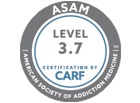As we know, drug addiction is a growing epidemic in the United States and across the globe. The impact of drugs and alcohol are immeasurable, but we all know that short term effects of using substances cause a great deal of distorted perceptions, lowered inhibitions, and overall impairment. We were especially shocked to see the staggering numbers of drivers under the influence of drugs, even just in the state of Washington.
Washington State DUI Report
A roadside survey collected data in Washington State that reflected nearly 1 in 7 drivers, who were driving with children in the car, tested positive for THC in their system. Using marijuana and driving is dangerous, as marijuana causes slowed reaction times, and overall impairment, in addition to other negative side effects.
This is very concerning for the overall safety and welfare of the children in the car, as well as other people on the road and pedestrians. It can be overwhelming to think about the amount of impaired drivers, as it reflects a massive safety concern for all parties involved.
Washington State DUI for Alcohol and Marijuanna
Data was collected from a total of 2,056 drivers in Washington State. This roadside survey was called the Washington State Roadside Survey and was ongoing from June 2014 to June 2015. Although drivers with children in the car were less likely to test positive for alcohol, the survey found that one in seven drivers with children in the car tested positive for THC.
“Most drivers reported that cannabis use was very likely to impair driving. Among those who did not perceive any risk, 40.6% of drivers with a child and 28.9% of drivers without a child tested positive for THC” (Romano).
Impaired Driving and Child Endangerment in Washington State
Driving Under the Influence is not only extremely dangerous for the driver, but it is also life-threatening for anyone they come in contact with while driving. A classification of D.U.Is is specific for those who drive under the influence with children in the car, called DUI-CE or DUI-Child Endangerment. “Although DUI-CE crashes are a relatively small proportion of total alcohol-impaired driving crashes, they are persistent and devastating in their impact. Research does not account for the larger number of drivers who take the risk of DUI-CE but do not crash” (Romano).
In the study mentioned in this article, only drivers ages 21 or older were able to participate in the study. This demographic leaves out drivers aged 16-20 years old, who may account for many more drivers in the state of Washington who were driving under the influence.
“Among those who were driving with a child, 0.0% and 0.4% were alcohol positive during the daytime and nighttime, respectively. Among those who were not driving with a child, the likelihood of finding an alcohol-positive driver was substantially lower at daytime (0.7%) than at nighttime (6.7%)” (Romano).
Marijuana and Road Safety
Marijuana is difficult to test in correlation to impairment, unlike alcohol which a BAC (blood alcohol content) test could determine your level of impairment in a much easier way. So, what are highway and road safety officials doing about this?
“‘Currently, there are a number of different tests being developed and validated to detect whether drugs are present, including saliva and even breath tests for THC,’ according to study coauthor Angela Eichelberger, Ph.D., from the Insurance Institute for Highway Safety” (Journal of Studies on Alcohol and Drugs).
As you may know, marijuana is legalized in Washington State, but this does not mean that driving under the influence of marijuana is legal— nor is it safe by any means.
The Effects of Cannabis Intoxication
Cannabis, also known as marijuana, is a psychoactive drug that has become increasingly popular in recent years. While many people use cannabis for its perceived benefits, such as relaxation and stress relief, it is important to understand the potential risks and consequences associated with its use.
Cannabis intoxication greatly impairs your driving skills, and is dangerous to you and other drivers or pedestrians on the road. Cannabis can cause many immediate short term effects, impairing anyone who drives while high.
In general, cannabis intoxication is defined by the following criteria:
- Recent use of cannabis
- Clinically significant problematic behavior or psychological changes:
- Impaired motor coordination
- Euphoria
- Anxiety
- Sensation of slowed time
- Impaired judgment
- Social withdrawal
- Two or more of the following signs or symptoms within two hours of cannabis use:
- Conjunctival injection (dilated blood vessels in the eye)
- Increased appetite
- Dry mouth
- Tachycardia (elevated heart rate of over 100 beats per minute)
With these symptoms in mind, it’s shocking that so many drivers under the influence of marijuana. An increasing amount of people who drive while high are putting their lives, and the lives of others, in danger. For this reason, smoking weed and driving is a serious cause for concern and general safety.
The Perception of Marijuana
Many people regard marijuana as a drug that is not dangerous, which is a distorted view of the drug. Although marijuana does not lead to overdose or death, it is absolutely an addictive substance and does cause impairment, along with a long list of possible short and long term negative effects.
Drivers in Washington State who were participants in the study conducted seemed to commonly regard marijuana as a harmless substance, in terms of having the capability to impair their driving. “Still, some drivers did not recognize the risk of impairment, and those who thought marijuana was not likely to impair driving were more likely to test positive for THC than were other drivers. Among drivers with children who thought marijuana was not impairing, 40.6% tested positive for THC” (Journal of Studies on Alcohol and Drugs).
Coauthor of the study, Dr. Tara Kelley-Baker, of the AAA Foundation for Traffic Safety in Washington, DC says “Although there are legal age limits for purchasing and using, we know from previous research examining child endangerment issues that very young children are really vulnerable to driver impairment. States’ policies protecting young children from alcohol-impaired drivers are ineffective. Now we are legalizing another drug which may further increase risk to the most vulnerable group.”
What Is Cannabis Use Disorder?
According to the Diagnostic and Statistical Manual of Mental Health Disorders (DSM-5), people with cannabis use disorder experience a wide range of symptoms that negatively impact their quality of life.
To determine if your cannabis use may be problematic is by considering the following DSM-5 criteria:
- Do you use larger amounts of cannabis or use it for longer than intended?
- Have you tried to lower your marijuana use or stop using it altogether without success? Despite your efforts, have you found yourself unable to cut back or quit?
- Do you find yourself spending a lot of time obtaining and using cannabis?
- Do you experience cravings or strong urges to use marijuana?
- Does cannabis use interfere with your daily responsibilities, such as work, school, or relationships?
- Do you use cannabis despite negative consequences, such as legal issues or strained relationships?
- Do you miss out on important social, occupational or recreational activities because of your cannabis use?
- Are you using cannabis in physically hazardous situations (e.g., driving, operating machinery)?
- Do you use marijuana despite knowing it causes or exacerbates any physical or psychological problems?
- Have you build a up a tolerance? (A need for markedly increased amounts of cannabis to achieve intoxication and desired effect. (OR) A noticeable decrease in the effects with continued use of the same amount of marijuana.)
- Have you experienced cannabis withdrawal symptoms? (OR) Have you taken other substances to relieve or avoid marijuana withdrawal symptoms?
If you answered yes to one or more of these questions, it may be time to reevaluate your relationship with cannabis. Meeting two or more of the above criteria means that you may have a cannabis use disorder. Please reach out to our team of addiction specialists to explore your treatment options.
Can You Experience Cannabis Withdrawal?
Yes, chronic cannabis abuse can result in withdrawal symptoms when you stop using the drug, as it is an addictive substance.
Cannabis withdrawal symptoms include the following:
- Irritability, anger or aggression
- Nervousness or anxiety
- Sleep difficulty (e.g. insomnia, disturbing dreams)
- Decreased appetite and/or weight loss
- Restlessness
- Depressed mood
- Abdominal pain
- Shakiness
- Tremors
- Sweating
- Fever
- Chills
- Headache
“These signs or symptoms cause clinically significant distress or impairment in social, occupational or other important areas of functioning” (Miller).
Other Risks of Cannabis Use
In addition to continued cannabis use having a potential to cause an addiction, cannabis use can also put users at risk for a cannabis-induced mental disorder. Cannabis-induced mental disorders can include:
- Anxiety disorders
- Depression
- Bipolar disorder
- Schizophrenia
- Amotivational syndrome— a syndrome that represents a lack of desire in completing tasks, a sense of apathy towards the future, poor concentration, and disinterest in social or other activities
- Disruptive cognitive function
- Neuropsychological decline
- Psychotic disorders
(Miller).
Impaired Driving in Washington
The statistics for driving under the influence in Washington are disheartening, much like the statistics that reflect impaired driving across America. In Washington state, 50% of roadway fatalities are due to impaired driving. In just 2017, over 25,500 impaired drivers were arrested for driving under the influence.
The Washington Traffic Safety Commission reports that multiple-drug use or “poly”-drug use was the most common impairment among Washington driver fatalities from traffic collisions— this is double the number of alcohol-only fatal collisions, and five times higher than the marijuana-only collisions (Glover). Any driving after using substances is dangerous, as all substances produce results of impairment in some sense. Driving under the influence doesn’t only put you in danger, but it puts everyone around you in danger.
Getting Help for a DUI
At Spokane Heights Detox, we understand that seeking help for substance abuse can be a difficult decision. We offer a compassionate and supportive environment for those looking to overcome their cannabis addiction.
Our experienced staff will work with you to develop an individualized treatment plan that includes therapy, support groups, and other evidence-based techniques to help you break free from your dependence on cannabis.
Our detox program focuses on helping clients safely and comfortably withdraw from cannabis while also addressing underlying mental health issues that may contribute to addiction. We believe in treating the whole person – mind, body, and spirit – in order to achieve lasting recovery.
If you or someone you know is struggling with an addiction, please reach out to us at (888) 907-0898. Our team of addiction specialists are available to take your call 24 hours a day, 7 days a week. Because We Care.
References:
Eduardo Romano, Tara Kelley-Baker, Staci Hoff, Angela Eichelberger, Anthony Ramírez. Use of Alcohol and Cannabis Among Adults Driving Children in Washington State. Journal of Studies on Alcohol and Drugs, 2019; 80 (2): 196 DOI: 10.15288/jsad.2019.80.196
Glover, Jonathan. “Sobering Statistics: Traffic Safety Commission Highlights Danger of ‘Poly-Drug’ Driving.” Spokesman.com, The Spokesman-Review, 19 Apr. 2018, www.spokesman.com/stories/2018/apr/20/sobering-statistics-traffic-safety-commission-high/
Journal of Studies on Alcohol and Drugs. “One in 7 Washington State drivers with children in the car recently used marijuana.” ScienceDaily. ScienceDaily, 25 April 2019.
Miller, Norman S, et al. “Marijuana Addictive Disorders: DSM-5 Substance-Related Disorders.” OMICS International, OMICS International, 16 Jan. 2017, www.omicsonline.org/open-access/marijuana-addictive-disorders-and-dsm5-substancerelated-disorders-2155-6105-S11-013.php?aid=84734
Washington Traffic Safety Commission. “Impaired Driving.” Impaired Driving, Washington Traffic Safety Commission, wtsc.wa.gov/programs-priorities/impaired-driving/
























